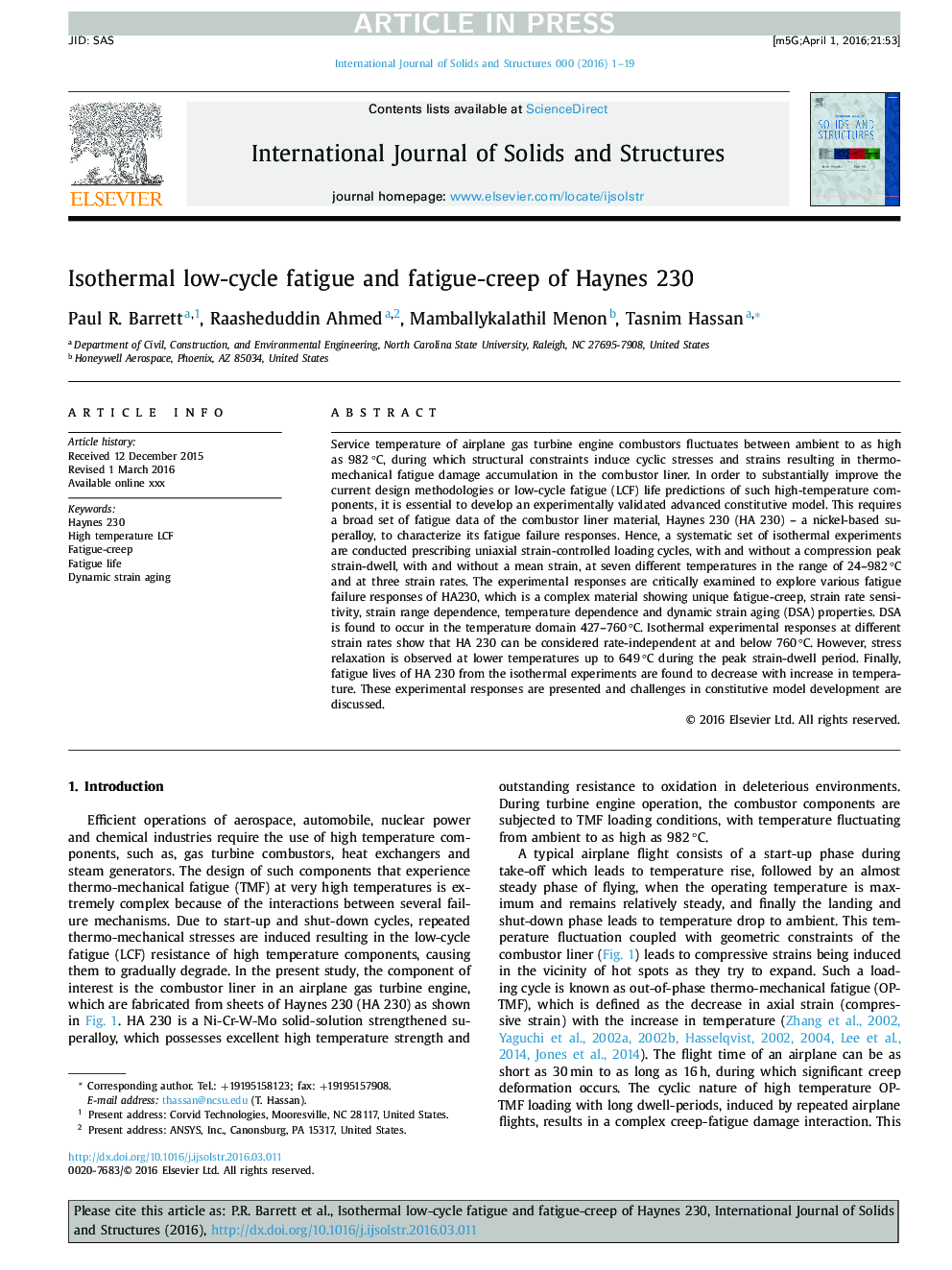| Article ID | Journal | Published Year | Pages | File Type |
|---|---|---|---|---|
| 6748531 | International Journal of Solids and Structures | 2016 | 19 Pages |
Abstract
Service temperature of airplane gas turbine engine combustors fluctuates between ambient to as high as 982 °C, during which structural constraints induce cyclic stresses and strains resulting in thermo-mechanical fatigue damage accumulation in the combustor liner. In order to substantially improve the current design methodologies or low-cycle fatigue (LCF) life predictions of such high-temperature components, it is essential to develop an experimentally validated advanced constitutive model. This requires a broad set of fatigue data of the combustor liner material, Haynes 230 (HA 230) - a nickel-based superalloy, to characterize its fatigue failure responses. Hence, a systematic set of isothermal experiments are conducted prescribing uniaxial strain-controlled loading cycles, with and without a compression peak strain-dwell, with and without a mean strain, at seven different temperatures in the range of 24-982 °C and at three strain rates. The experimental responses are critically examined to explore various fatigue failure responses of HA230, which is a complex material showing unique fatigue-creep, strain rate sensitivity, strain range dependence, temperature dependence and dynamic strain aging (DSA) properties. DSA is found to occur in the temperature domain 427-760 °C. Isothermal experimental responses at different strain rates show that HA 230 can be considered rate-independent at and below 760 °C. However, stress relaxation is observed at lower temperatures up to 649 °C during the peak strain-dwell period. Finally, fatigue lives of HA 230 from the isothermal experiments are found to decrease with increase in temperature. These experimental responses are presented and challenges in constitutive model development are discussed.
Related Topics
Physical Sciences and Engineering
Engineering
Civil and Structural Engineering
Authors
Paul R. Barrett, Raasheduddin Ahmed, Mamballykalathil Menon, Tasnim Hassan,
